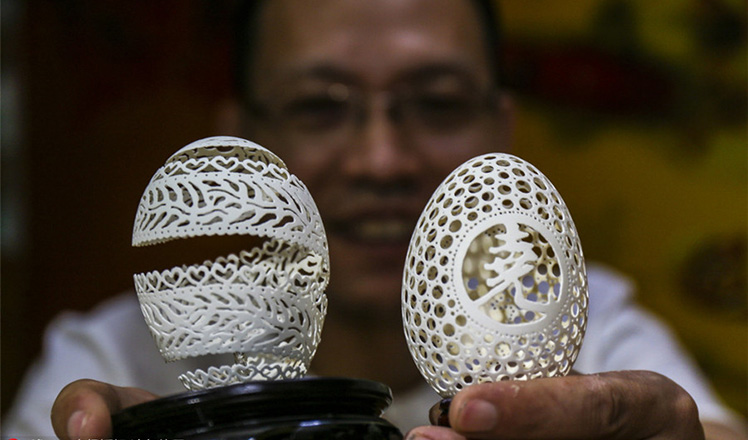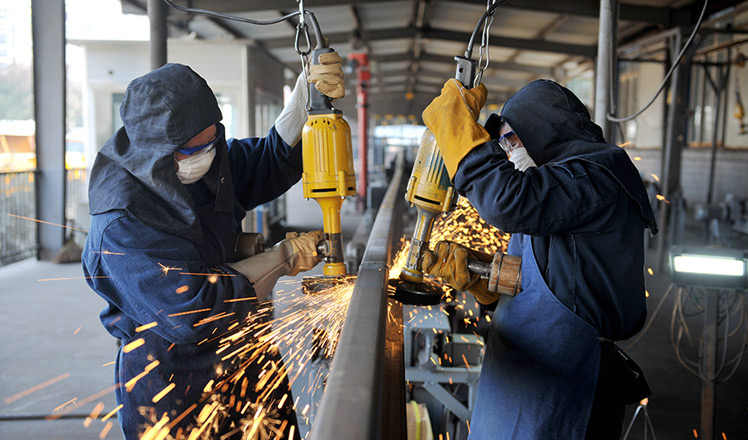'Electric superhighway' taking shape in Brazil
Updated: 2016-02-22 05:54
By MAO PENGFEI in Mexico City(China Daily Latin America)
|
||||||||
For the Chinese, the annual Spring Festival is a time to make the trek home for family reunions, no matter where in the world they happen to be.
This year, however, many Chinese workers and technicians missed the holiday to stay on in Brazil's Amazon basin to keep working on a large-scale project expected to revolutionize the country's electric grid.
Deep in the Amazonian rain forests of northern Brazil's Para State, the world's third-largest hydroelectric dam – Belo Monte – is under construction. Expected to be completed by January 2019, it will deliver electricity to Brazil's most densely populated southern region.
It's an ambitious plan, given the thousands of kilometers between the dam and the communities it is set to supply. But it's feasible, thanks to China's ultra-high-voltage (UHV) direct current (DC) transmission technology.
In February 2014, a consortium formed by China's State Grid Brazil Holding and two Brazilian companies won a bid to build and operate a 2,084-km transmission line connecting the Belo Monte hydropower plant to the southern state of Minas Gerais, near Sao Paulo, and converter stations.
In July 2015, State Grid Brazil Holding won a second bid to build a 2,250-km transmission line linking the power plant to the town of Nova Iguacu, near Rio de Janeiro.
The first UHV line, which is under construction, will be the first "electricity superhighway" in Brazil and all of Latin America.
If completed, the dam and UHV transmission projects will power the development of Brazil's energy-hungry southern areas, said Xu Chang, State Grid's local executive officer on the project.
Brazil's hydropower potential ranks third in the world, after Russia and China. Almost 80 percent of the energy consumed in the country originates from hydroelectric plants. And like China, Brazil is a country with a vast territory whose energy consumption centers are far from where the resources are located.
The insufficiency and uneven distribution of electricity has put new pressures on economic development. Statistics show the price of electricity for home use increased by 50 percent last year.
The mammoth "electricity superhighway" presents numerous obstacles and challenges.
According to Brazilian law, to start construction, the project had to first undergo a series of rigorous tests, including environmental and archaeological impact studies, to get the needed permits from the Brazilian Institute of Environment and Renewable Natural Resources, the Environment Ministry, and other agencies.
Construction started during Brazil's rainy season, with heavy rain almost every afternoon often creating delays.
Since entering the Brazilian market, State Grid has established a platform for other Chinese companies, including electric equipment producers and builders.
"By cooperating with us on those projects, other Chinese companies can save up to 10 years in entering the Brazilian market," said Qu Yang, deputy general manager of State Grid Brazil Holding.
In addition to the revolutionary change that UHV transmission projects will bring to Brazil's energy matrix, local residents are directly benefitting from the construction projects.
The two transmission lines, with a total investment of 15 billion reais (US$4.7 billion), are expected to create around 34,800 jobs in Brazil, according to government estimates.
"My hometown in the State of Para is not a very developed area," said Sara Barker, who works in human resources at State Grid Brazil. "But this electricity transmission project will make a difference. The first phase of the project will provide 15,000 jobs."
Construction of the dam and transmission lines has attracted tens of thousands of people living in nearby areas, generating a new consumer market.
The second phase of the project will bring more Chinese equipment and investment to Brazil, and provide more jobs for local communities, said Xu.
"This new 800kV project is State Grid's first overseas UHV DC transmission project. It will be a model for China to help establish a new global energy network, and has strategic meaning for China to promote its UHV technology and equipment worldwide," said Cai Hongxian, general manager of State Grid Brazil Holdings.
Bilateral energy cooperation has yielded great results in recent years, according to Xie Wenze, a visiting scholar in Brazil from the Chinese Academy of Social Sciences. Infrastructure cooperation between China and Brazil is mutually beneficial and should be further strengthened, Xie added.
"The Brazilian government can count on infrastructure investment as a way to overcome the current economic recession, and promote economic and social development," Xie said.
- Missing children found safe in nearby village
- Rich Chinese splurge on sportswear as luxury's lustre dims
- Urgent remedy sought for pediatrician shortage
- China starts safety check for school buses as new semester draws near
- Ticket scalpers face crackdown at Beijing hospitals
- Judicial DNA test in hot demand after policy change
- Classic Car Show kicks off in London
- Balkan, Austria police agree to register refugees on Macedonian border
- Turkey blames Kurdish militants for Ankara bomb; vows reprisals
- Britain scrambles fighters to intercept Russian bombers
- Chinese community to protest against Peter Liang's verdict
- Car bomb attack on military in Turkish capital kills 28

 Chinese photographers' work shines in major photo contest
Chinese photographers' work shines in major photo contest
 88th Academy Awards Governors Ball Press Preview
88th Academy Awards Governors Ball Press Preview
 Egg carving master challenges Guinness World Record
Egg carving master challenges Guinness World Record
 Missing children found safe in nearby village
Missing children found safe in nearby village
 Madonna's world tour lands in Hong Kong
Madonna's world tour lands in Hong Kong
 Producing high-speed rail tracks
Producing high-speed rail tracks 
 Surreal world created by Canadian photographer
Surreal world created by Canadian photographer
 Lanterns light up the night across China
Lanterns light up the night across China
Most Viewed
Editor's Picks

|

|

|

|

|

|
Today's Top News
Investigation for Nicolas's campaign
Will US-ASEAN meeting be good for region?
Accentuate the positive in Sino-US relations
Dangerous games on peninsula will have no winner
National Art Museum showing 400 puppets in new exhibition
Finest Chinese porcelains expected to fetch over $28 million
Monkey portraits by Chinese ink painting masters
Beijing's movie fans in for new experience
US Weekly

|

|







